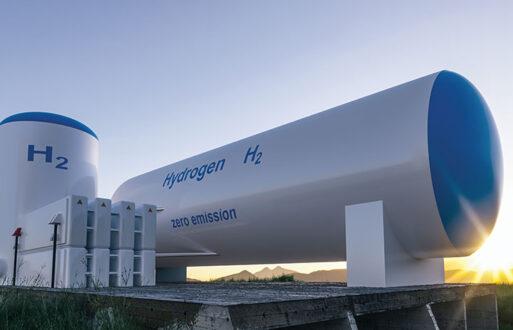Disclaimer: This blog post, which answers “What factors determine whether a zone in MISO will clear high in the Planning Resource Auction?,” was generated using PCI’s ISO/RTO Documentation AI Chatbot, powered by ChatGPT. While the content is based on curated market documentation, it is intended for informational purposes only and may not reflect the most up-to-date or comprehensive information. We recommend verifying any key details directly with relevant sources before making business decisions.
For the latest answer to this question, generated live, visit our free ISO/RTO Documentation Chatbot.
If you’ve ever wondered why some zones in MISO’s Planning Resource Auction (PRA) clear at higher prices than others, you’re not alone. The PRA is a critical mechanism for ensuring resource adequacy across MISO’s footprint, but it’s also a complex process influenced by a variety of factors. From local clearing requirements (LCRs) to supply-demand imbalances, several elements can drive up clearing prices in specific zones.
In this blog post, we’ll explore the key factors that contribute to high clearing prices in MISO zones. You’ll learn how LCRs, zonal resource shortfalls, transmission constraints, capacity accreditation, and supply-demand dynamics interact to shape the outcomes of the PRA. By the end, you’ll have a clear understanding of why some zones face higher costs and what that means for market participants.
ISO/RTO Documentation Chatbot
Use our AI to search Business Practice Manuals from ISO/RTO markets at no cost.
How local clearing requirements (LCRs) impact clearing prices
Let’s start with local clearing requirements (LCRs), which are a cornerstone of MISO’s resource adequacy framework. Each Local Resource Zone (LRZ) in MISO has an LCR, representing the minimum amount of capacity that must be physically located within the zone to meet its reliability needs. This ensures that even during peak demand or emergencies, the zone has enough resources to maintain reliability without over-relying on imports.
When a zone’s LCR exceeds the capacity available within its boundaries, it creates a shortfall. This shortfall forces the PRA to clear higher-priced offers to meet the LCR, driving up the clearing price for that zone. For example, if a zone has limited local generation but a high LCR, it’s almost guaranteed to see elevated prices in the auction.
The role of zonal resource shortfalls
Zonal resource shortfalls occur when the total capacity available in a zone falls short of its Planning Reserve Margin Requirement (PRMR). This can happen for several reasons, such as plant retirements, delays in new resource development, or insufficient participation in the PRA. When a zone experiences a shortfall, the auction must clear higher-priced resources to meet the PRMR, leading to higher clearing prices.
Imagine a zone where several coal plants have recently retired, and new renewable projects are still in the pipeline. The lack of available capacity creates a shortfall, forcing the auction to rely on more expensive resources, such as peaker plants or imports, to fill the gap.
How transmission constraints limit imports
Transmission constraints are another critical factor that can drive up clearing prices in specific zones. While MISO’s market is interconnected, the ability to import capacity from neighboring zones is limited by the physical capabilities of the transmission network. When a zone’s import capability is constrained, it can’t fully rely on external resources to meet its LCR or PRMR.
For instance, a zone with strong demand growth but limited transmission capacity may find itself unable to import enough low-cost resources from neighboring zones. This forces the PRA to clear higher-cost local resources, resulting in elevated clearing prices.
The impact of capacity accreditation
Capacity accreditation determines how much capacity a resource can contribute to meeting a zone’s reliability requirements. For example, intermittent resources like wind and solar often receive lower accreditation values due to their variability, while dispatchable resources like natural gas plants receive higher values.
If a zone relies heavily on resources with low accreditation, it may struggle to meet its LCR or PRMR, even if it has a significant amount of installed capacity. This can lead to higher clearing prices as the auction clears additional resources to compensate for the lower accreditation of existing assets.
Supply-demand imbalances and their ripple effects
Finally, supply-demand imbalances play a significant role in determining clearing prices. When demand outpaces supply in a zone, the PRA must clear higher-priced offers to meet the shortfall. This imbalance can be exacerbated by factors like extreme weather, economic growth, or delays in resource development.
Consider a zone experiencing rapid industrial growth. The increased demand for electricity puts pressure on the PRA to secure additional capacity, often at higher prices. Similarly, a heatwave or cold snap can drive up demand, leading to higher clearing prices as the auction clears more expensive resources to ensure reliability.
What this means for market participants
Understanding why some zones in MISO clear high in the Planning Resource Auction is essential for market participants. High clearing prices can signal opportunities for new resource development, particularly in zones with persistent shortfalls or transmission constraints. They can also highlight the need for investments in transmission infrastructure or demand-side resources to alleviate supply-demand imbalances.
By analyzing factors like LCRs, zonal resource shortfalls, and capacity accreditation, market participants can better anticipate auction outcomes and make informed decisions. Whether you’re a generator, a load-serving entity, or an investor, these insights can help you navigate MISO’s complex market dynamics and identify opportunities for growth.
For the latest answer to this question, generated live, visit our free ISO/RTO Documentation Chatbot.







